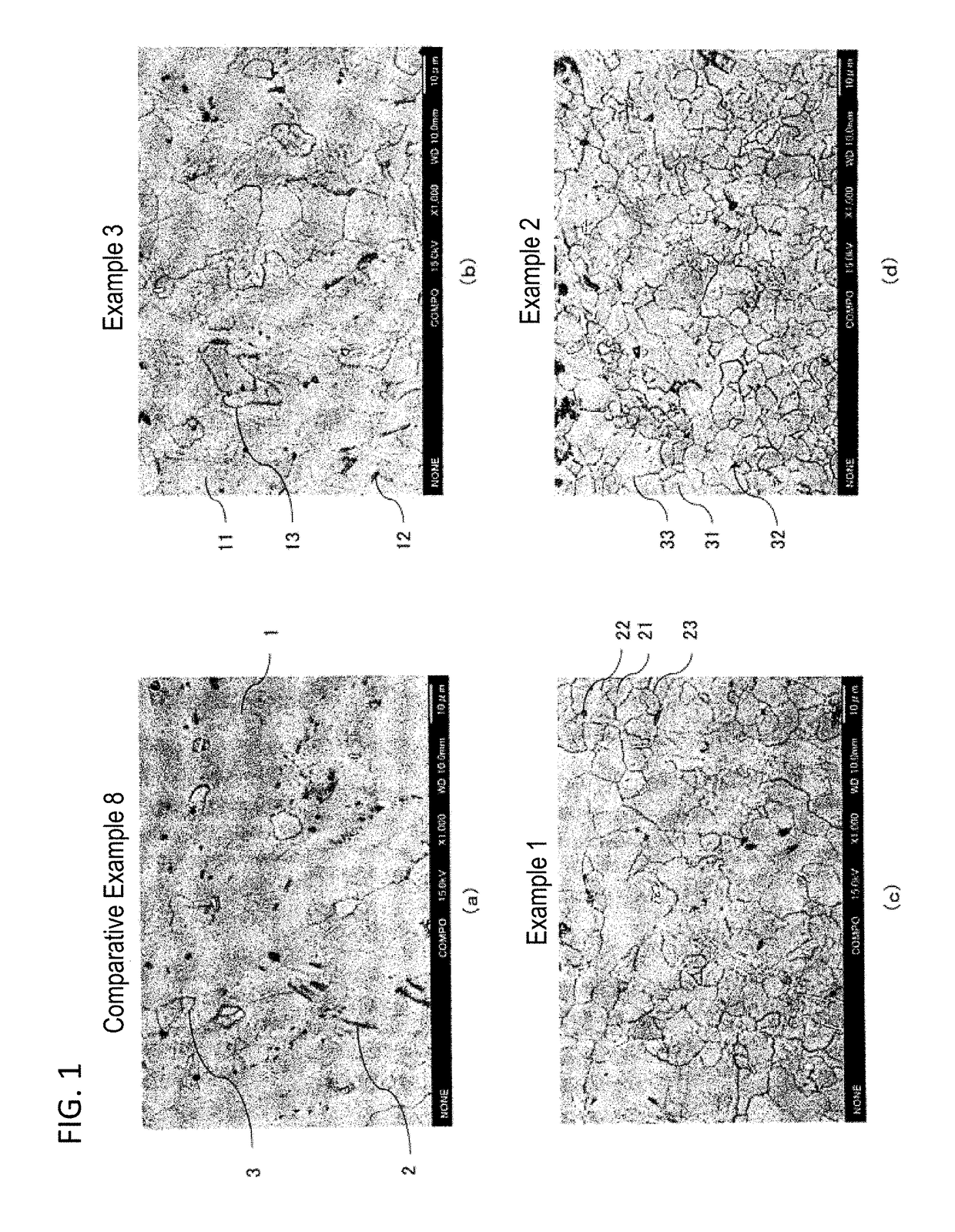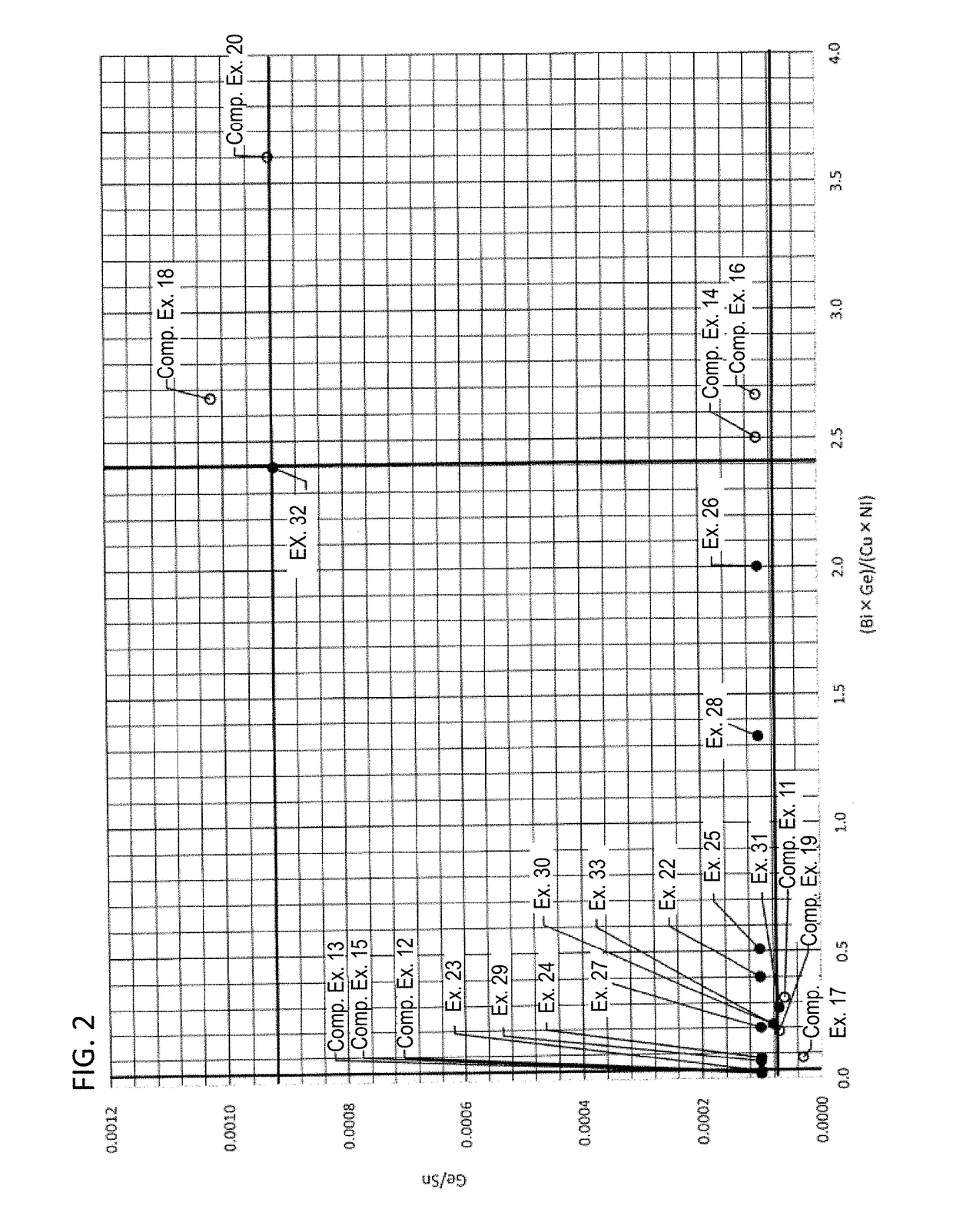Solder alloy, solder ball, and solder joint
a solder ball and alloy technology, applied in the direction of soldering apparatus, manufacturing tools, welding/cutting media/materials, etc., can solve the problems of forming vacancies in the cathode-side portion of the solder joint, the current density per terminal of the semiconductor elements mounted on such electronic devices becomes higher, and the solder joint ruptures. , to achieve the effect of high bonding strength, inhibiting em, and high wetting properties
- Summary
- Abstract
- Description
- Claims
- Application Information
AI Technical Summary
Benefits of technology
Problems solved by technology
Method used
Image
Examples
examples
[0087]Solder alloys respectively consisting of the alloy compositions shown in Tables 1 and 2 were used to form solder joints. The solder joints formed were evaluated for bonding strength by conducting a shear strength test, examination of rupture M, and EM test. The solder alloys were evaluated also for wetting property. The evaluation methods used are as follows.
[0088]Shear Strength
[0089]Soldering was conducted as follows: the solder alloys shown in Tables 1 and 2 were each bonded to OSP-treated Cu electrodes (hereinafter referred to simply as “Cu electrodes”) of a PCB having a substrate thickness of 1.2 mm and an electrode size of 0.24 mm in diameter. The soldering was conducted in the following manner: solder balls having a diameter of 0.3 mm were produced beforehand from each solder alloy; a water-soluble flux (WF-6400, manufactured by Senju Metal Industry Co., Ltd.) was applied to the substrate, and the balls were then placed thereon; and thereafter, soldering was performed by...
PUM
| Property | Measurement | Unit |
|---|---|---|
| composition | aaaaa | aaaaa |
| current density | aaaaa | aaaaa |
| mass | aaaaa | aaaaa |
Abstract
Description
Claims
Application Information
 Login to View More
Login to View More - R&D
- Intellectual Property
- Life Sciences
- Materials
- Tech Scout
- Unparalleled Data Quality
- Higher Quality Content
- 60% Fewer Hallucinations
Browse by: Latest US Patents, China's latest patents, Technical Efficacy Thesaurus, Application Domain, Technology Topic, Popular Technical Reports.
© 2025 PatSnap. All rights reserved.Legal|Privacy policy|Modern Slavery Act Transparency Statement|Sitemap|About US| Contact US: help@patsnap.com



